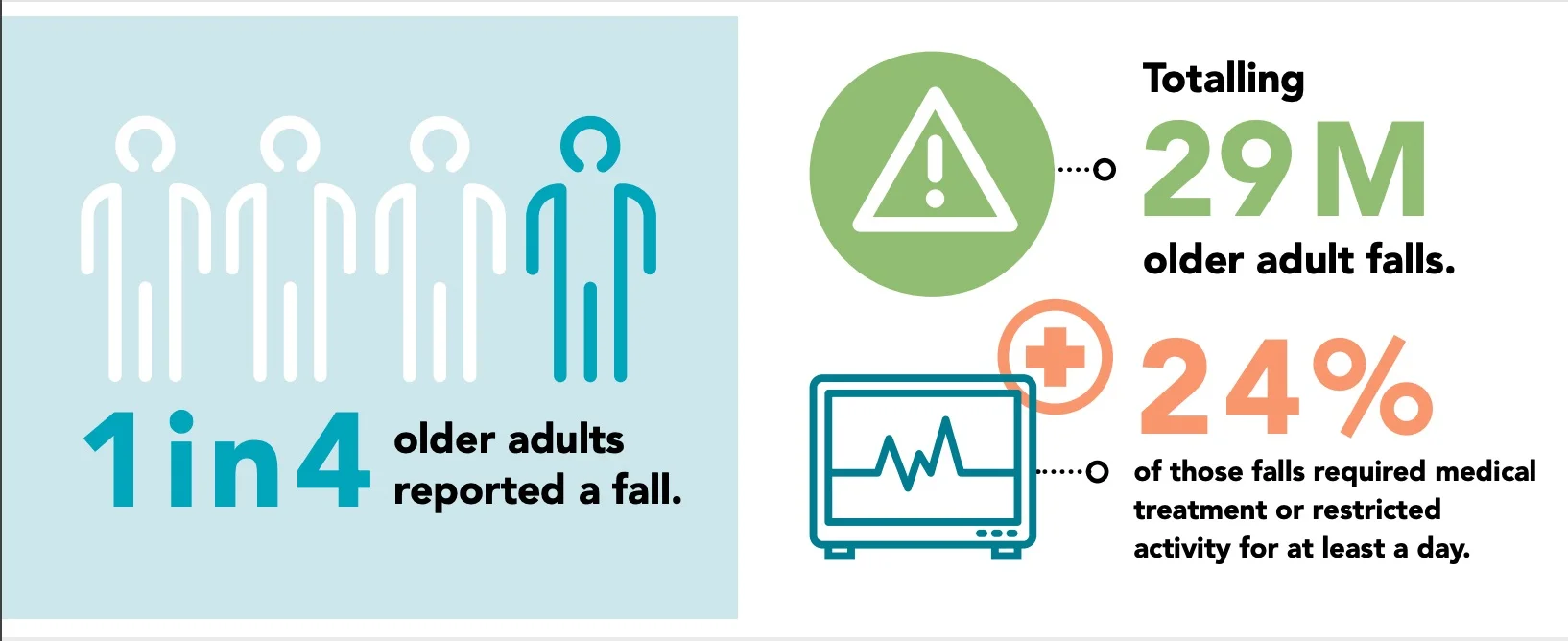Everyone knows someone who worries about a loved one falling and seriously injure themselves. As we age, falls are a surprisingly frequent killer in the United States. The good news is that modern medicine can prevent falls in many ways. Today I’ve put together resources to help people prevent falls. Let’s go over the 3 basic parts of fall prevention so you can learn the steps to help your loved one.
1. Fall risk Screening: Identifying people who are at risk for falling
A “screening” is is a quick and effective way to check for the most risky signs of impending falls. It should be performed by your primary care physician or your physical therapist. Here is a link to three of the most common fall screening tools:
*please do not actually try number 2 and 3 at home with your loved one. Leave it to the professionals.
3. The Timed up and go Test (TUG)
If you read those tests and you’re saying to yourself, “No way my loved one could do that,” then they are probably in urgent need of a thorough fall risk assessment by a physical therapist.
2. Fall Risk Assessment: Remove or modify the things that increase fall risk.
Healthcare providers first look for things that can be quickly changed to lower fall risk. Medications often have side effects that make your balance worse so your doctor may need to review your loved one’s medications and make sure that each medication is currently worth the increased fall risk. Their home can also be modified with handrails and ramps to help reduce the risk of falling. Decluttering is also very helpful.
Here is a link to high-risk medications categories
Here is a list of helpful and affordable home improvements that make a home more safe
3. Intervention: Improving balance and function
Physical therapists can significantly improve balance and function while also reducing fall risk. They can also perform a much more thorough fall risk assessment that is tailored to the specific person. People have poor balance for many reasons. Sometimes it’s that they are weak. Other times it’s that they have poor sensation in their feet or that they have poor vision. Fall screening is a blunt tool for generally categorizing someone as a fall risk. Balance assessment is a precise tools that allows the creation of effective interventions that improve balance and ultimately reduce the risk that your loved one will fall.
If you know someone that you think is at risk of falling find a local physical therapist to begin the process of assessing their risk, reducing the risks present and improving their balance and function.

